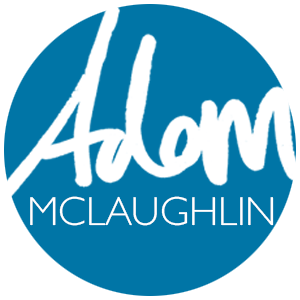This post contains affiliate links. If you make a purchase from a recommendation, it doesn’t cost you anything extra, and I get a referral fee.
Small goals are good for you and good for the client
My biggest challenge in tackling large projects is that they overwhelm me. I like to jump into new ideas quickly, but the follow-through is a challenge.
As an entrepreneur, I’m naturally a sprinter, not a marathon runner (when it comes to new ideas. When it comes to ACTUALLY running, I don’t bother trying in my flip-flops.)
If I’m looking at a full project, I can easily procrastinate on starting because I know my “sprinting” energy is only going to get me so far before the “marathon” sludge has to take over, so I break big projects into little goals.
I know. This sounds like advice from your 9th-grade science teacher giving advice on your massive presentation, but in reality, I’ve tricked myself into making this work for business, and my secret weapon is my project management system. I use Trello, but use whatever works for you.
Rather than looking at one big project and not knowing where to start, I look at any project (even a small project) as bite-sized pieces. Our trello board is pre-built with the templates, so I can check off 43 items one at a time as if they’re small projects rather than the new client’s project feeling like the song that doesn’t end… (you’re welcome for that earworm).
Tips for tackling large projects:
- Have premade checklist for projects you do repeatedly. Rather than having to start each project remembering what needs to be done, have a premade checklist.
- Start custom projects by pulling up your more “standardized” project’s template and then modifying it for whatever the customizations are – Modify the blog titles, add meta descriptions to an existing site, delete unused plugins, etc.
- Add items that take longer to add than to do. I know it seems like it would be faster to just change out the logo than to make an item for “Switch the logo” before actually switching it, but there’s a sense of accomplishment when you see things on your to-do list getting tackled. Micro instead of macro.
- Have more than one project going at once. I know, counterintuitive, but for me, if I get bored of looking at the same images and dashboard, making a switch bumps up my “Sprinter” energy again, then I can go back to the original project. I can get 2 projects done in parallel faster than 2 individual projects in sequence.
- Set yourself a checklist goal, then take a break. Tell yourself you’re going to take that “Angry birds and coffee” break after you’ve knocked off 4 things on that to-do list.
- Boring tasks first. Oh, this is definitely the opposite of how I’m wired. I have certain things I really enjoy and certain things I loathe but have to be done. Keep your attention on growing your agency to the place where you can outsource your boring tasks. There are people out there who actually love those.
Let Your Client in on your To-Do List:
If you’ve added every step of the process to your to-do list, your client will see the massive amount of work that’s going into their site. This is great for creating a list as a scope for your project and helps narrow down your to-do list to micro items instead of macro items.
Instead of the client seeing “Update colors and logo” they see:
- Resize small logo for top menu
- Resize medium logo for footer
- Resize large logo for the home page header
- Create a transparent version of the logo
- Extract key colors from the logo
- Create a color scheme and generate hex codes with Coolors.co
- Import hex codes to dashboard
- Apply colors to headings, backgrounds, and text
- Test top menu for color contrast on desktop and mobile
They now understand that their site isn’t a “couple hours on the weekend” project, but a project that includes strategy, decision-making, and testing. When it comes to scope, this long line of intentional steps will help the client justify the investment. Even if the end result is the same as “the other guy” they’ll be confident that you have a process in mind when “the other guy” just says “Yeah. Build the home page, build the other pages, test the contact form and take it live.”
